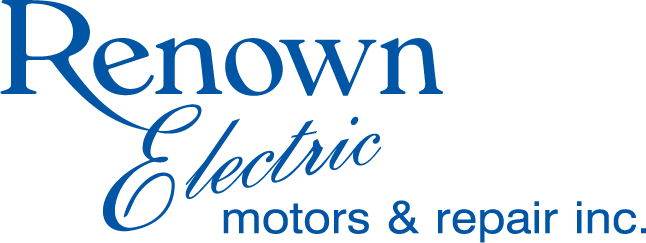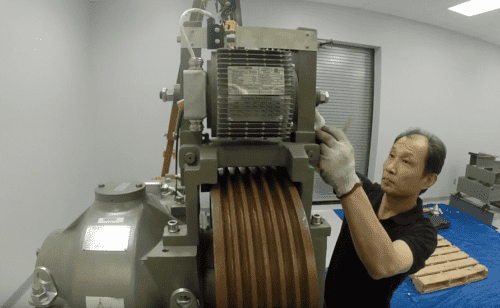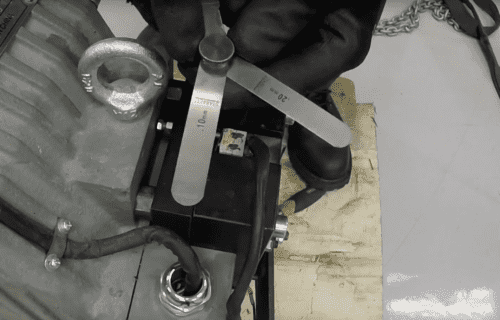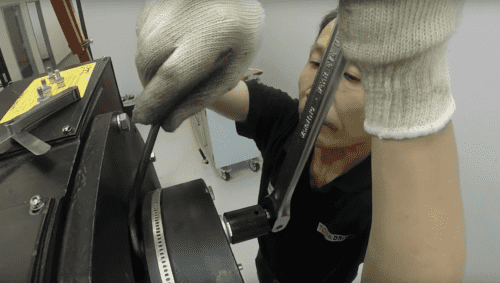Brakes are an essential component of an elevator’s safety system. Most modern passenger elevators contain a redundant system of at least two to three types of brakes. In addition to being responsible for stopping a car during emergency and holding the elevator in place during normal operation, brakes must also ensure smooth, quiet, and uninterrupted movement of the passenger car during normal operation.
Most importantly, brakes must also be reliable enough to be activated in emergency situations such as unexpected car movement, power outages, or free fall situations. Therefore, regular maintenance and adjustment of elevator brakes are paramount for efficient operation as well as passenger safety.
Common Reasons for Brake Inspection
Elevator brakes, like any other electrical component, are susceptible to dirt and dust accumulation. These layers of foreign material can attract moisture to unpainted surfaces, such as brake rods, which can lead to oxidation and corrosion. Excess lubrication due to improper maintenance techniques can also further encourage the buildup of dirt and dust layers.
Another reason for regular brake inspection and maintenance is to prevent excessive degradation. Brake discs are one of the few components of an elevator that should not be subject wear and tear since in modern elevator controllers they should be applied only once the car has stopped. Therefore, if you see any wear on your brakes it is often a result of improper timing of the pick or hold from your controller. Pre-torque can also increase the wear on the brakes as timing of applying the pre-load on the motor prior to the car moving means the motor wants to move while the brake is still applied and the motor slips through the brake while it is being released. Prolonged use of the brake discs without maintenance can result in excessive loss of thickness and increased displacement (air gap) between the armature disc/drum and the coil carrier assembly. This increased air gap can then lead to a multitude of problems, including brake dragging and brake release delay.
Proper Brake Adjustment Protocol
One of the first and major procedures performed when inspecting and adjusting elevator brakes is checking the air gap between the disc/drum and the brake pad assembly. With the air gap measured, technicians can then determine whether adjustments or part replacements are required.
The air gap is inspected using a go/no-go feeler gauge to verify that the space is within acceptable tolerances. Please refer to the manufacturers specifications for actual tolerances. However, generally, if the gap is greater than 0.02 inches but less than 0.04 inches, the brakes are adjusted by loosening the fixing screws and turning the setting bolts clockwise towards the coil carrier assembly. This procedure is repeated at all setting bolt locations until the air gap is set to the recommended 0.02” distance equally all around. If the air gap is measured to be more than 0.04” as determined by the feeler gauges, replacement parts would typically be required.
Common Tools for Modern Brake Adjustment
Proper adjustment of the brakes requires the use of appropriate tools and equipment. Since the brake assembly consists of various parts, fixings, and connections, several tools are generally needed.
Feeler Gauges
Go/no-go feeler gauges are required to ascertain whether or not the air gaps are within acceptable tolerances.
Wrenches
Should adjustment be required, Allen wrenches or socket wrenches are needed to loosen the fixing screws that attach the brake to the motor’s end shield. Imperial or metric wrenches are then used to adjust the setting bolts clockwise towards the coil assembly to achieve the required air gap measurement. Once the adjustment process is complete, a torque wrench is used to retighten the fixing screws to the appropriate tightness. All of these tools may be either standard sized or adjustable as necessary.
Where to Go for Trusted Service
Renown Electric Motors and Repairs Inc., has entered a strategic partnership with Torin Drive International (TDI) to be an authorized service provider and distributor of their elevator parts and equipment. TDI is a leading global manufacturer of elevator traction machines, with the capacity to produce over 150,000 CSA and A17 complaint machines a year.
With TDI’s expertise combined with Renown Electric’s more than 30 years’ experience providing quality electric motor and repair services, we are committed to providing products and services that meet and exceed the demands of our customers.
Check out the library of instructional videos on our website to help your mechanics learn the techniques and tools required for proper brake adjustment on all types of Torin machines.
To learn about how our qualified engineers can assist you with your maintenance or repair needs, feel free to contact us here or call us directly at 877-742-3665.





